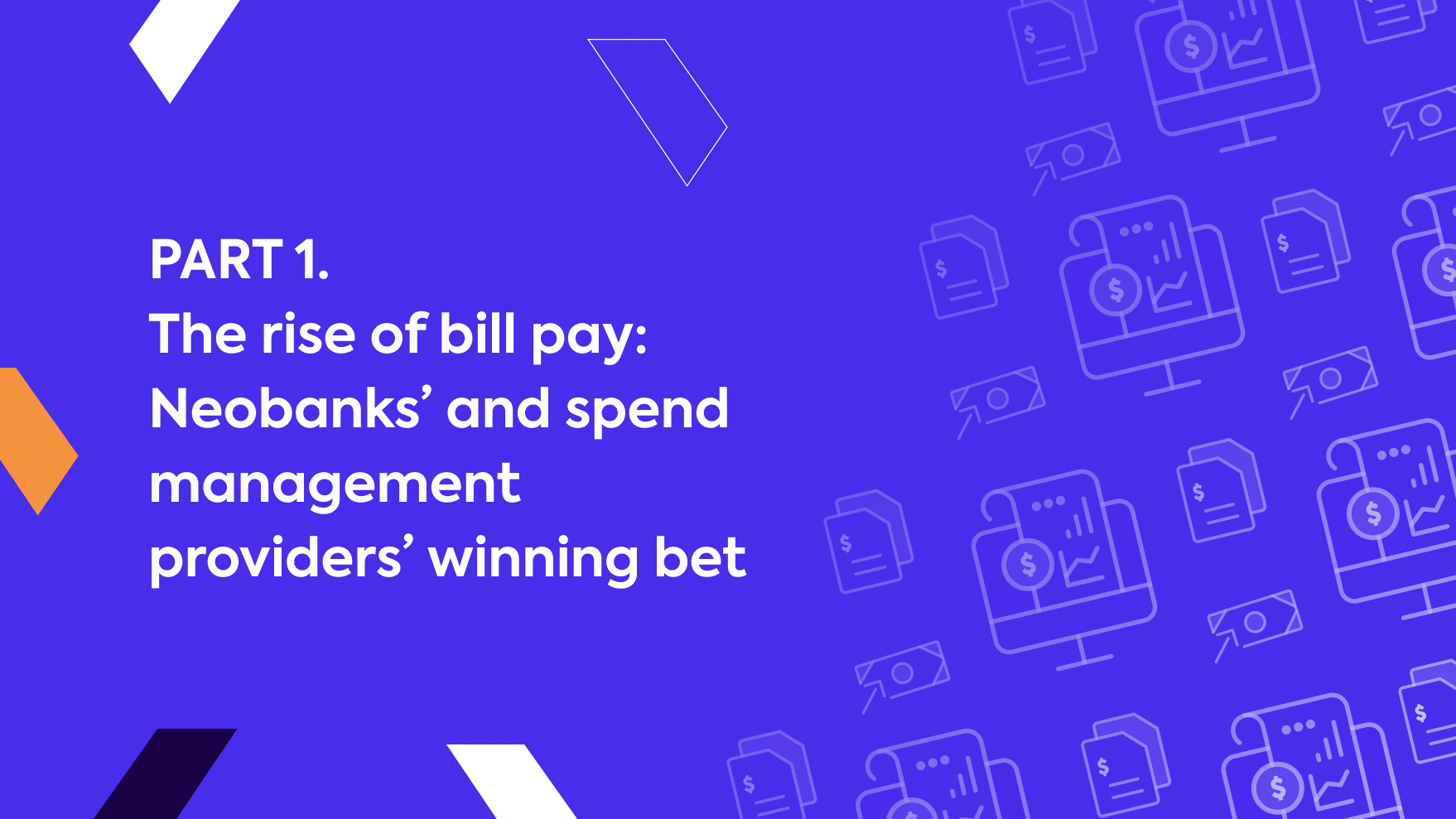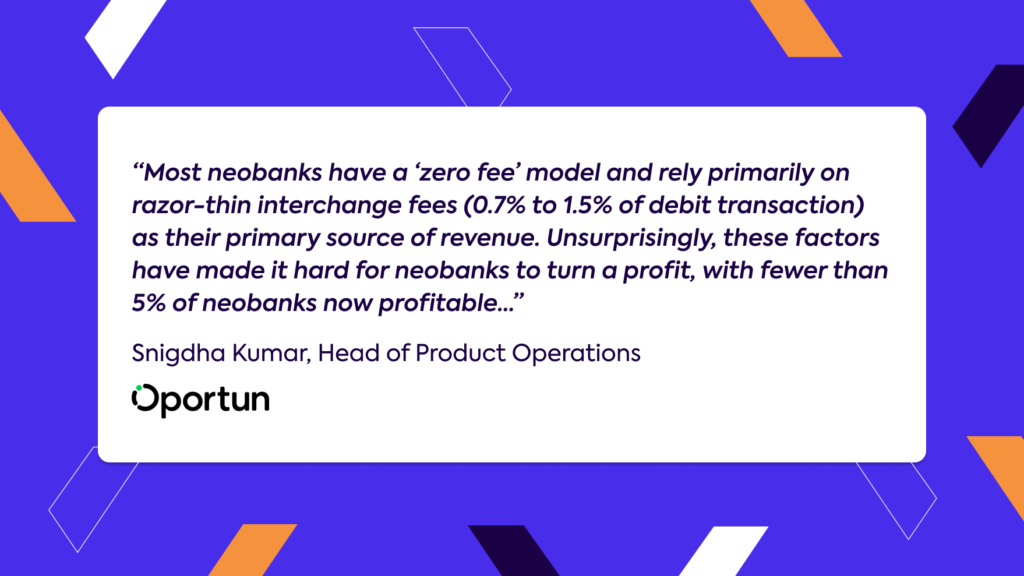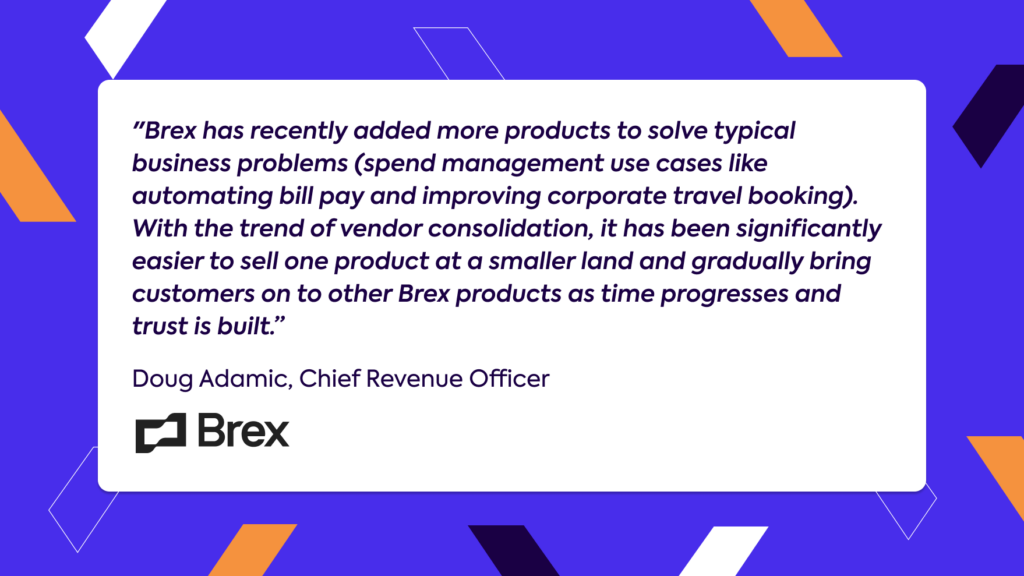
Despite the rapid growth of neobanks and spend management players, the industry still has a well-known problem: achieving profitability.
A 2023 report revealed that despite around 400 neobanks achieving above-average growth, they’re still struggling to turn a profit. Fast-forward to 2024 and rising inflation and scarce equity injections have forced these providers to focus more on sustainable revenue models instead of pursuing growth at all costs. This move may finally put them on the path to profitability.
Adding bill pay features to their platform is becoming pivotal in this transition.
As customers increasingly value convenience and accessibility, this trend highlights a smart investment opportunity for proactive providers who want to stay ahead of the curve. By prioritizing features like bill pay, they aren’t just responding to the market’s current demands but are also setting the stage for future growth and stability.
This is the first piece in our two-part series that delves into how current trends have pushed bill pay to the forefront for neobanks and spend management providers. Once you’ve read this article, head over to part two of the series to learn how to build bill pay features efficiently.
The competitive landscape is changing, fast
The corporate card and spend management space is experiencing a dynamic shift, making it one of the fastest-growing domains in B2B fintech. By 2026, this sector is projected to be worth $49.3 billion—a success that has led to an increasing number of providers entering the market.
At the heart of this evolution sits a multi-product strategy. Essentially, providers are branching into previously underserved sectors such as lending and accounts payable automation (i.e., bill pay) to explore new revenue streams, drive growth, and boost customer lifetime value.
However, this expansion is about more than diversification; it’s intended to deepen customer engagement and foster a stronger reliance on providers’ platforms, thereby supporting customer retention in the long term.
Case in point: Revolut recently unveiled plans for a new AI-driven product, ‘Billpay’. The tool will enable businesses to seamlessly extract invoices from their accounting platforms and execute transfers after obtaining necessary approvals.
James Gibson, the general manager of Revolut Business, emphasizes the transformative impact this new product will have, stating, “We’re aiming to reduce the time our customers spend on accounts payable by more than 80%.”
Similarly, Corpay, a global leader in business payments, recently launched Corpay Complete. This new spend management platform melds corporate cards and expense reimbursements with accounts payable automation and supplier payments, creating a comprehensive solution for business financial management.
It won’t be long before other providers follow suit.
Why bill pay is a strategic bet
As noted above, with this market shift, neobanks and spend management providers are looking toward sustainable business models that can bring in a steady revenue stream—moving away from the traditional reliance on interchange fees. The reason is that interchange fees are reduced by reward programs or divided among several parties and don’t significantly contribute to the bottom line. It also fluctuates heavily depending on the state of the economy, with customers spending less during downturns.
As Snigdha Kumar, head of product operations at Oportun, points out in a recent Forbes article:

That’s where solutions like accounting automation come into play. With the increasing adoption of bill pay in the market, neobanks and spend management providers that offer these features are positioning themselves right at the core of this opportunity, primed to leverage all the benefits it brings.
It also makes for a very natural progression as providers look to solve more of the ‘spend management problem’ for SMBs. Bill pay automation is a great place to start on the product diversification journey as it’s easily accessible compared to areas like lending that present greater barriers to entry.
Below we dive into some of the reasons why bill pay automation presents such a lucrative opportunity.
1. It creates a central financial control center
Neobanks and spend management providers have their sights set on becoming their customers’ central financial control center, meaning they want to position themselves as indispensable platforms for managing financial operations—including by integrating bill pay features.
This strategy is already in motion at several companies. For instance, in a recent interview, Brex CRO Doug Adamic described the company’s approach and its projected effects on lifetime customer value and retention:

In a nutshell, this customer-first approach solves multiple pain points for businesses in a single solution. By addressing customers’ need for convenience and ease, neobanks and spend management providers can remain competitive in a rapidly expanding sector.
2. It offers a world of revenue opportunity
The B2B payments market is poised to skyrocket from over $88 trillion in 2022 to more than $111 trillion globally by 2027. Deutsche Bank’s research highlights a significant revenue opportunity, with accounts payable automation and e-payments potentially unlocking a $70 billion opportunity in the U.S. alone—with the possibility of even greater earnings on a global scale.
The expected growth in demand for bill pay solutions presents a significant opportunity for providers who can effectively tap into this market. It’s important to note that bills usually make up a large portion of a business’s expenses, which means that bill pay solutions have the potential to generate higher fees than spend captured on a card.
That said, the interest in automation is clear, as more than 90% of mid-sized firms plan to automate their accounts payable and receivable processes. By focusing on bill pay solutions, neobanks and spend management platforms can directly address these needs, providing valuable tools that improve financial management and stability for SMBs.
Success stories like Ramp Bill Pay illustrate just how lucrative automating accounts payable can be. It hit over $1 billion in bill pay volume within six months—a quick and significant win, demonstrating the high demand for efficient bill pay solutions.
Neobanks and spend management providers have a number of options for monetizing bill pay. For instance, some are opting for a bundling strategy by offering bill pay automation as a premium feature to encourage users to upgrade to a monthly paid plan. Others offer the functionality for free, providing you use their card, as a means of driving usage. There are also those that simply charge a small transaction fee on top of the interchange costs.
And the revenue potential goes beyond just these numbers. As neobanks and spend management providers develop bill pay features, they’re also positioned to add more value through services like fraud detection, payment tracking, and automated budgeting tools—all of which not only improve the user experience but could also open up new revenue streams.
3. It solves real pain points for SMBs
Small and medium-sized businesses (SMBs) face acute financial management challenges, especially in managing cash flow and handling accounts payable efficiently. In fact, reports suggest that 72% of SMBs encountered cash flow issues in 2023, highlighting an urgent need for solutions to these pain points. However, despite this obvious necessity, many SMBs haven’t fully transformed their spend management processes.

That said, the interest in automation is clear, as more than 90% of mid-sized firms plan to automate their accounts payable and receivable processes. By focusing on bill pay solutions, neobanks and spend management platforms can directly address these needs, providing valuable tools that improve financial management and stability for SMBs.
The future of bill pay looks bright 💫
As more SMBs start using bill pay, this will undoubtedly fuel growth in the neobank and spend management markets. Looking at the industry’s current direction, it’s clear that bill pay isn’t just a fleeting trend but a value proposition that promises to boost revenue for many years to come.
If you’re a provider exploring bill pay offerings for your customers, check out part two of this series for a deeper dive into how you can get started.